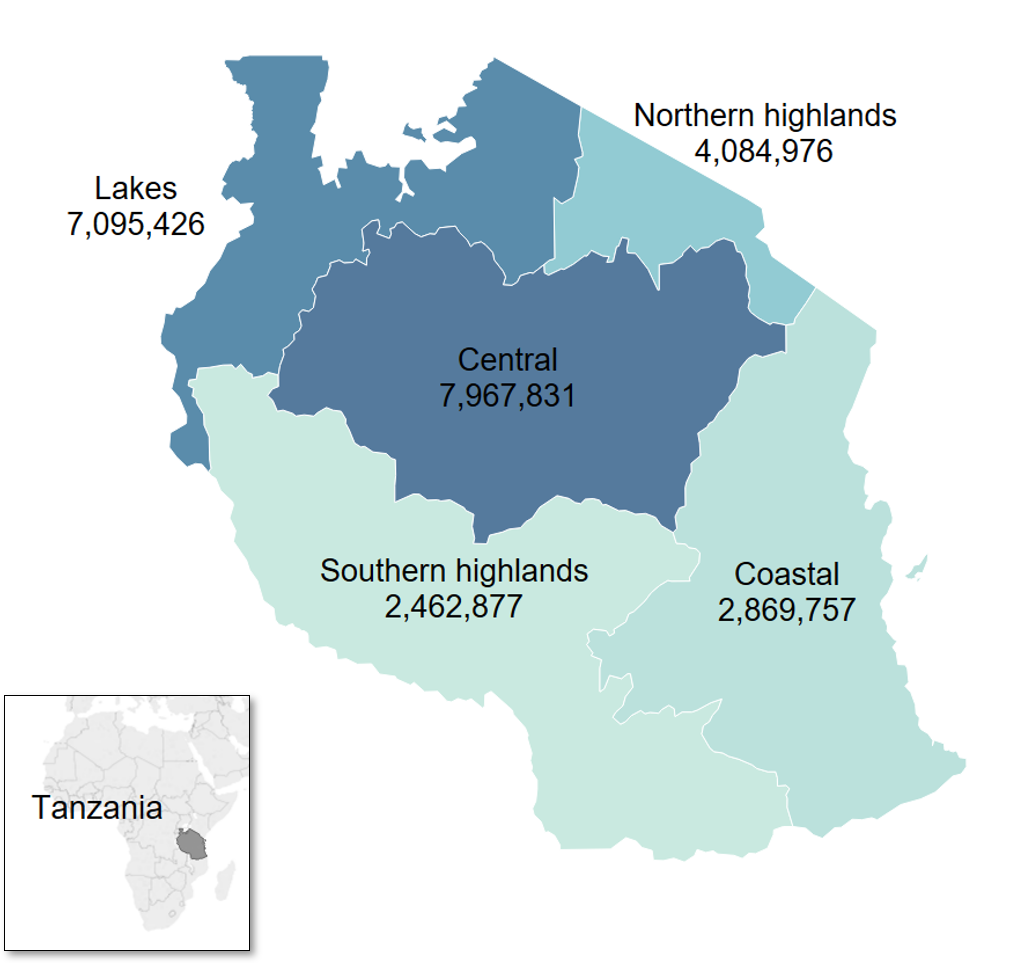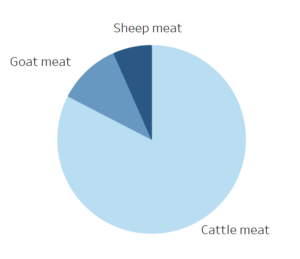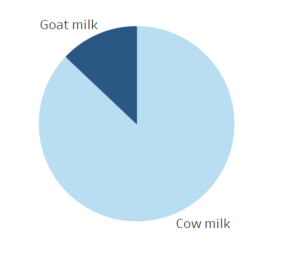Small ruminant production in Tanzania
Small ruminants (goats and sheep) are kept for multiple purposes and provide a modest, but increasing, contribution to national production of red meat and milk. Most products are consumed by the household or traded through informal markets.
Industry snapshot:
- Tanzania has the 11th largest population of small ruminants in Africa.
- 19 million goats & 5.6 million sheep – kept for production of meat, milk, fibre & skins.
- Small ruminants are most common in the pastoral and agro-pastoral regions of Central Tanzania and the Lakes.
- Small ruminants contribute 17% of national red meat and 13% of national milk production.
Small ruminant population by agricultural zone (Ministry of Agriculture 2018)
Small ruminant production systems
Pastoralism with larger herds
- Groups of 20-200 local livestock free-graze extensive communal grazing lands during the day, and are brought into an enclosed pen at night for security.
- Animals are kept predominantly for meat production, but may also be milked.
Smallholder herds
- Groups of 1-20 local livestock graze communal lands during the day, and are brought inside at night.
- Animals kept for both meat and milk production.
Smallholder intensive
- Crossbred and improved livestock are stall fed grass or fodder cut from communal land.
- Focus is mainly on dairy production.
Meat production and value chains
Small ruminants produce 66 thousand tonnes red meat/year (FAOstat 2017 data)
- Small ruminants are typically slaughtered for home consumption or traded through informal networks.
- Slaughter weight of local breeds is low (20-25 kg), and it may take several years for animals to reach slaughter weight.
Milk production and value chains
Goats produce 207 tonnes milk/year (FAOstat 2017 data)
- Small ruminant dairy mainly contributes to local value chains.
- Milk produced in peri-urban and urban areas is more likely to enter formal value chains.
- Annual milk yields are around 200-300 kg/head, which is similar to milk yields from local cattle.
Opportunities for small ruminant production
- Small ruminants may act as a stepping stone to ownership of cattle, or provide a more profitable and less risky alternative in marginal or densely populated areas where feed resources are limited.
- There is increasing domestic demand for both red meat and milk production. With access to markets, small ruminants can help to meet this demand.
- High demand for goat meat from the Middle East may provide market incentives for farmers to finish animals at an earlier age or keep larger and faster growing crossbred animals.
Limitations to production
Low production from small ruminant systems is caused by:
- High animal losses due to disease, predation and theft
- Fragmentation and degradation of grazing lands
- Labour required for grazing animals
- Low nutritional value and seasonality of local pastures
- Irregular supply and high prices of supplementary feeds
- Lack of water
- Low genetic potential of local breeds
Small ruminants are often viewed by government and donors as a supplementary source of protein and income, so receive less attention and investment compared to cattle.
References:
- Ministry of Agriculture (2018) 2016/17 Annual Agriculture Sample Survey Crop & Livestock Report, Zanzibar
- FAOstat www.fao.org/faostat
Download our small ruminant production in Tanzania fact sheet here.



